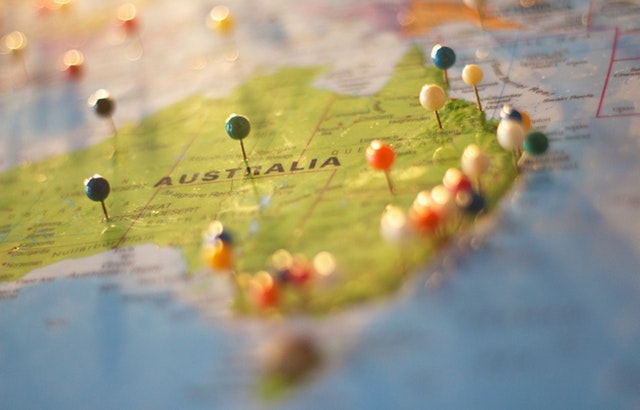Murdoch’s NewsCorp Australia vs. Google and Facebook or BigTech
Australian media outlets led by Murdoch’s NewsCorp, Google, Facebook, (mostly) conservative politicians and commentators (catering to above median voter age demographics) are demanding payment for any use of their news content or ‘journalism’ by Google and Facebook (catering more to below median voter age demographics), including a broad based focus upon posts, indexing, shares and links; backgrounded by Google threats to withdraw Google search and some media outlets from indexing.
However, the campaign conflates several issues but also misses other related issues of importance e.g. monopoly or anti-competitive behaviour by all players, opaque financial or tax arrangements, lack of good digital regulation e.g. privacy in Australia, decline in quality journalism and diversity of views in legacy media, while NewsCorp is paywalled, backgrounded by special treatment of major media players in Australia by the governing LNP Liberal National Party (freely promoted by NewsCorp), at the expense of quality, local and independent media, and an informed society.
Following are excerpts from international and Australian media presenting a confusing array of issues, causes, solutions, and gaps, or silence.
From Deutsche Welle
‘Google vs. Australia: 5 questions and answers
Australia wants Google to pay for displaying local media content. In return, the tech giant has threatened to disable its search engine in the country. Could this confrontation set a precedent?
What’s happening in Australia?
Australia has proposed a bill that would oblige Google and Facebook to pay license fees to Australian media companies for sharing their journalistic content. Noncompliance would incur millions in fines. In response, Google has threatened to block Australian users from accessing its search engine should the bill become law.
Mel Silva, managing director of Google Australia and New Zealand, told an Australian senate committee her company had no other choice but to block access to Google’s search engine in Australia should the bill be adopted in its current form. Even though, she said, this was the last thing Google wanted.
Australian Prime Minister Scott Morrison in turn declared that his country would not be intimated, saying, “We don’t respond to threats.” He added that “Australia makes our rules for things you can do in Australia. That’s done in our Parliament.”….
Why has the confrontation escalated?
Google has said it is willing to negotiate with publishers over paying license fees for content. The tech giant, however, argues Australia’s proposed law goes too far. It would oblige Google to pay not only when providing extensive previews of media content, but also when sharing links to the content. This, said Silva, would undermine the modus operandi of search engines…..
What’s at stake?
“Search engines earn considerable money from media content, whereas publishers earn little,” said Christian Solmecke, a Cologne-based lawyer specialized in media and internet law. Google, however, argues that publishers benefit from the platform, as users are directed to media content when it is indexed on the Google Newsfeed and elsewhere.
But publishers want a bigger share of the pie by receiving licensing fees. “Billions are thus at stake for Google,” said Solmecke. He doubts the tech giant will follow through on its threat and disable the search engine in Australia. “After all, that search engine is an elementary part of the digital world.”
Is the EU planning a similar law?
In the spring of 2019, the EU adopted an ancillary copyright directive. All members states must now translate the directive into national legislation and adopt national ancillary copyright laws. Akin to the proposed Australian media bill, the EU directive aims to ensure publishers gain a share of revenue earned by internet platforms like Google when sharing journalistic content. Tech companies like Google generate revenue by, for instance, placing ads next to search results.
However, the directive does not place as many demands on companies such as Google and Facebook. “European and German ancillary copyright law is and will remain more narrow than the Australian bill,” said Stephan Dirks, a lawyer specialized in copyright and media law in Hamburg. Unlike the Australian bill, the EU directive allows tech platforms to display short media snippets for free. And it does not establish an automated arbitration model, either.
European confrontation looming?
Even though EU ancillary copyright law is more limited than the planned Australian law, experts do not rule out EU member states clashing with Google….
…..Most EU member states are yet to pass their own ancillary copyright laws. It thus cannot be ruled out that Google’s threats will have an impact on national lawmaking processes, said Dirks.
Joel Fitzgibbon Helps Albo Show Who’s In Charge! (Ross Leigh, 31 Jan 2021)
Another viewpoint via AIMN Australian Independent Media Network suggesting private and dominant media vs. private and dominant digital companies, (the former are) pushing credibility on their demands for fairness when they too run monopolies, receive subsidies financial and in kind e.g. dilution of media ownership laws, reach etc….
‘Speaking of transitions, I’m still trying to get a handle on the whole Google should pay for content thing. While I think that Google is far too big and we need to be looking at ways to ensure it pays its share of tax and doesn’t take advantage of its near monopoly position, arguing that it should pay media for directing people to their site is like asking the Uber driver to pay a fee every time he brings someone to your restaurant. Whatever else, it does strike me as odd that the government is getting involved in this dispute between private companies and coming down so hard on the side of the media companies.
At least it would strike me as odd if it weren’t for the fact that the same government paid Murdoch companies to cover women’s sport and the Murdoch companies charge the ABC for the right to show it.’
‘Fakebooks in Poland and Hungary
Meanwhile in Central Europe, Poland and Hungary have launched local versions citing ‘censorship of conservative views’ as the reason versus accusations of trying to limit freedom of speech through a nationalist lens:
Local versions of Facebook have been launched in Poland and Hungary, though experience shows that technology ventures conceived with politically biased and nationalistic motives rarely succeed.
Poland and Hungary have seen the launch recently of locally developed versions of Facebook, as criticism of the US social media giants grows amid allegations of censorship and the silencing of conservative voices.
The creators behind Hundub in Hungary and Albicla in Poland both cite the dominance of the US social media companies and concern over their impact on free speech as reasons for their launch – a topic which has gained prominence since Facebook, Twitter and Instagram banned Donald Trump for his role in mobilising crowds that stormed the Capitol in Washington DC on January 6. It is notable that both of the new platforms hail from countries with nationalist-populist governments, whose supporters often rail against the power of the major social media platforms and their managers’ alleged anti-conservative bias.
Albicla’s connection to the ruling Law and Justice (PiS) party is explicit. Right-wing activists affiliated with the PiS-friendly weekly Gazeta Polska are behind Albicla….
……The December 6 launch of Hundub received little attention until the government-loyal Magyar Nemzet began acclaiming it as a truly Hungarian and censorship-free alternative to Facebook, which, the paper argues, treats Hungarian government politicians unfairly. Prime Minister Viktor Orban was one of the first politicians to sign up to Hundub, but all political parties have rushed to register, starting with the liberal-centrist Momentum, the party most favoured by young people.
Pal – a previously unknown entrepreneur from the eastern Hungarian city of Debrecen – said his goal was to launch a social media platform that supports free speech, from both the left and right, and is free from political censorship. “The social media giants have grown too big and there must be an alternative to them,” Pal told Magyar Nemzet, accusing the US tech company of deleting the accounts of thousands of Hungarians without reason.
While it’s unclear whether there is any government involvement in Hundub, its launch is proving handy for the prime minister’s ruling Fidesz party in its fight against the US tech giants. Judit Varga, the combative justice minister, regularly lashes out at Facebook and Twitter, accusing them of limiting right-wing, conservative and Christian views. Only last week, she consulted with the president of the Competition Authority and convened an extraordinary meeting of the Digital Freedom Committee to discuss possible responses to the “recent abuses by the tech giants”…..
Future of Farcebooks
Unfortunately for the Polish and Hungarian governments and their supporters, rarely have such technology ventures succeeded.’
For more blogs and articles about ageing democracy, Australian politics, business strategy, conservative, consumer behaviour, data protection, demography, digital literacy, digital technology, EU GDPR, media, political strategy, populist politics, SEO search engine optimisation and taxation.



